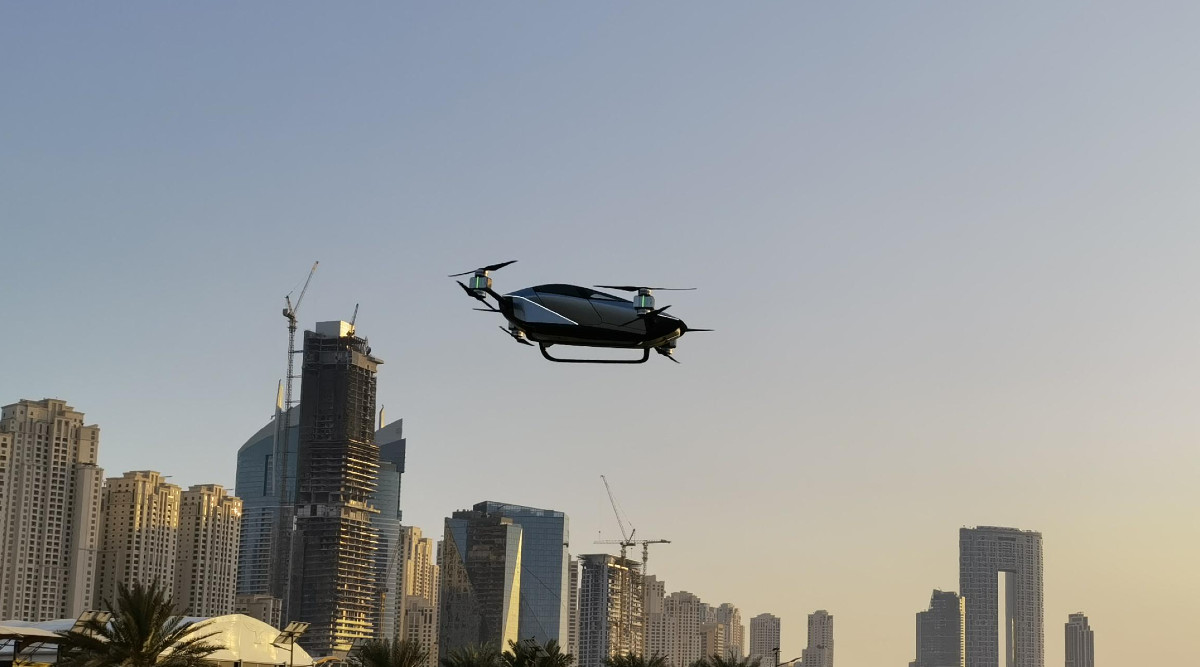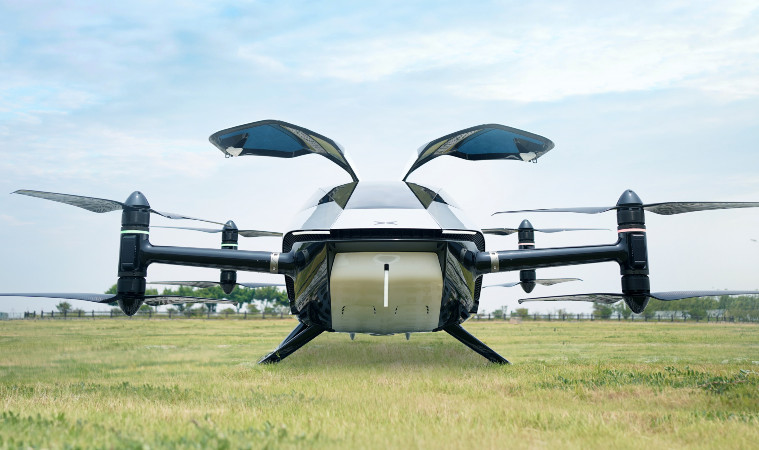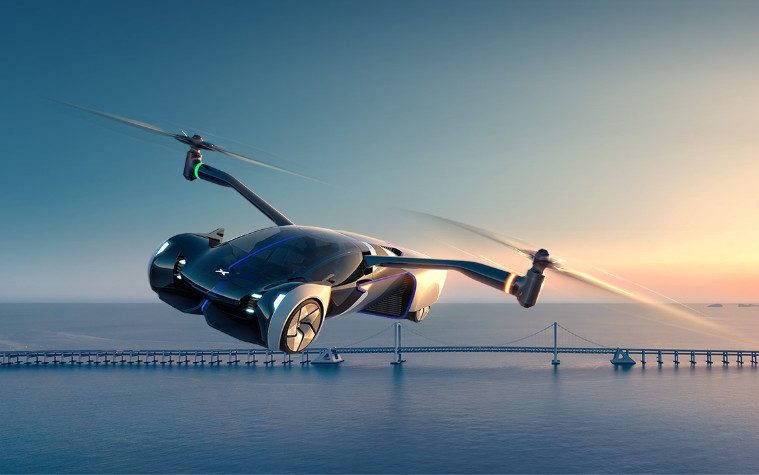China-based XPeng AeroHT conducted the very first public test flight of its electric flying car on October 11 at Skydive Dubai in front of 150 viewers, against the backdrop of panoramic views of the cityscape and excellent airspace conditions. The 90-second flight saw the car demonstrate electric vertical take-off and landing (eVTOL) capabilities. While a commercial-ready car is likely still years away from hitting the showroom, the company behind it has demonstrated all the necessary details that the idea is certainly close to becoming a reality.
Design and features
The Xpeng X2 is a “fifth-generation” flying car, according to XPeng AeroHT and is developed and manufactured independently by the Chinese company. It is a two-seater that adopts a minimalistic teardrop-shaped design, giving it a very futuristic appearance that looks straight out of a sci-fi movie. Aerodynamics has been taken into consideration here to achieve the ultimate in-flight performance, along with weight reduction and an all-carbon fiber body has been used.
Being an all-electric car, it does not produce any carbon emissions and contributes to the global effort to do away with ICE (Internal Combustion Engine) vehicles in favour of greener urban transportation. XPeng says that the X2 is most suitable for low-altitude city flights and “short-distance city journeys such as sightseeing and medical transportation.”
But perhaps the most exciting feature of the car is its ability to fly autonomously, where passengers can perform super-safe start, return, and landing operations at the touch of a button. There’s also a manual mode for the more adventurous ones out there.
Pricing and availability
There’s no word on the pricing and availability of the car right now, which is understandable given its early stages of development. However, at the company’s 1024 Tech Day last fall, we learned that its sixth-generation flying car will arrive sometime in 2024 and could cost below $156,600. This newer gen model will be able to drive on the road as well.
While that pricing can be used to arrive at a price estimate for the XPeng X2 as well, the 2024 availability date sounds way too optimistic, especially given the many obstacles that’ll need to be overcome before any vehicle of its kind is allowed to take to the skies.
Regulatory barriers
A serious amount of reliability and safety testing is required before any aircraft – that includes flying cars – is given an airworthiness certificate and eventually cleared for mass manufacturing. A report by Protocol reads that the only Vertical Take Off and Landing (VTOL) – specific standards in the world have been proposed in Europe. Meanwhile, in China, no such certificate has been given to any eVTOL companies. In fact, the certificate is yet to have a provision for eVTOL technologies, which means companies working on such tech can’t apply even if they want to. All this in turn means that it’ll take years, even decades before we start seeing the first flying cars in our daily routine.


